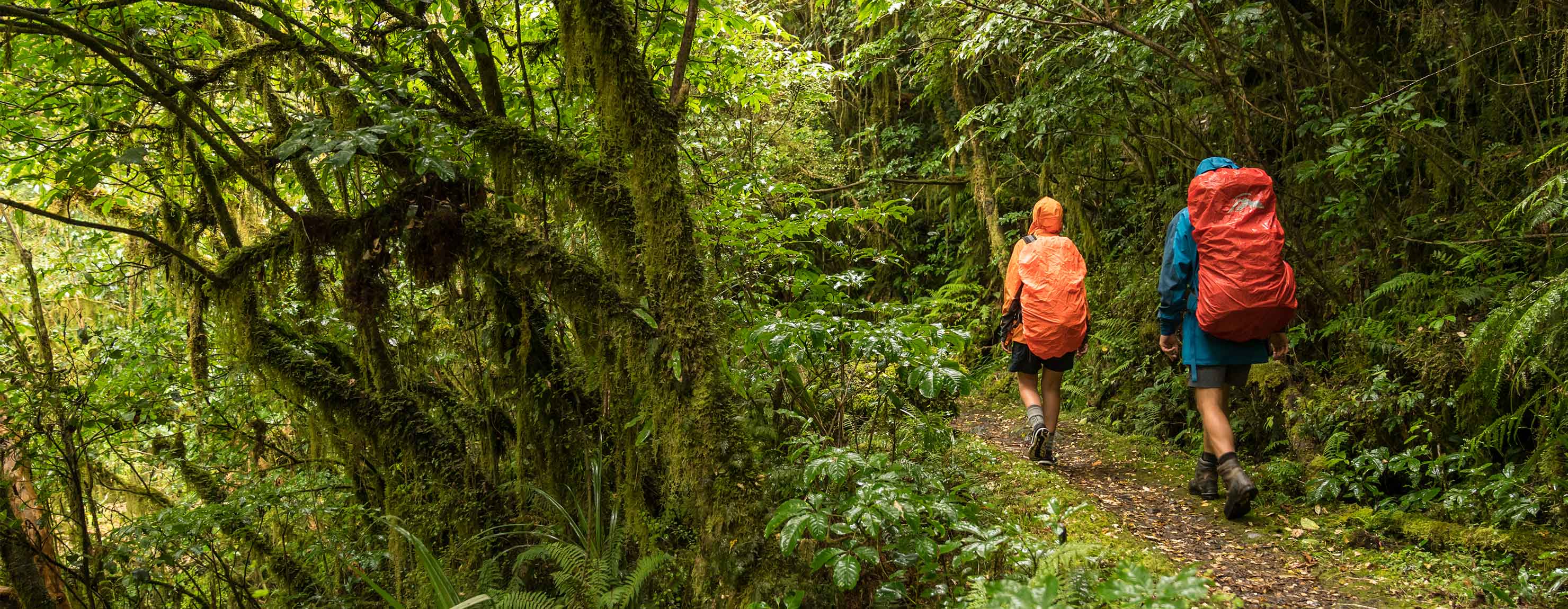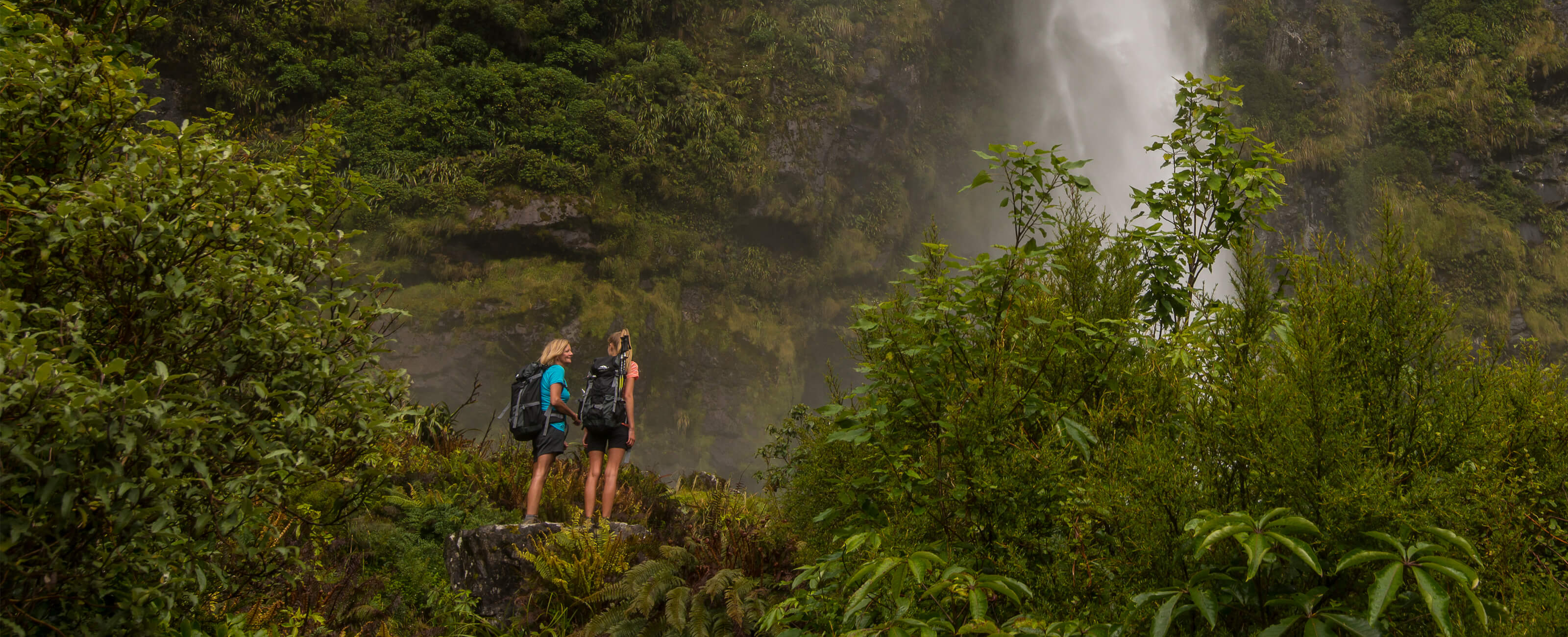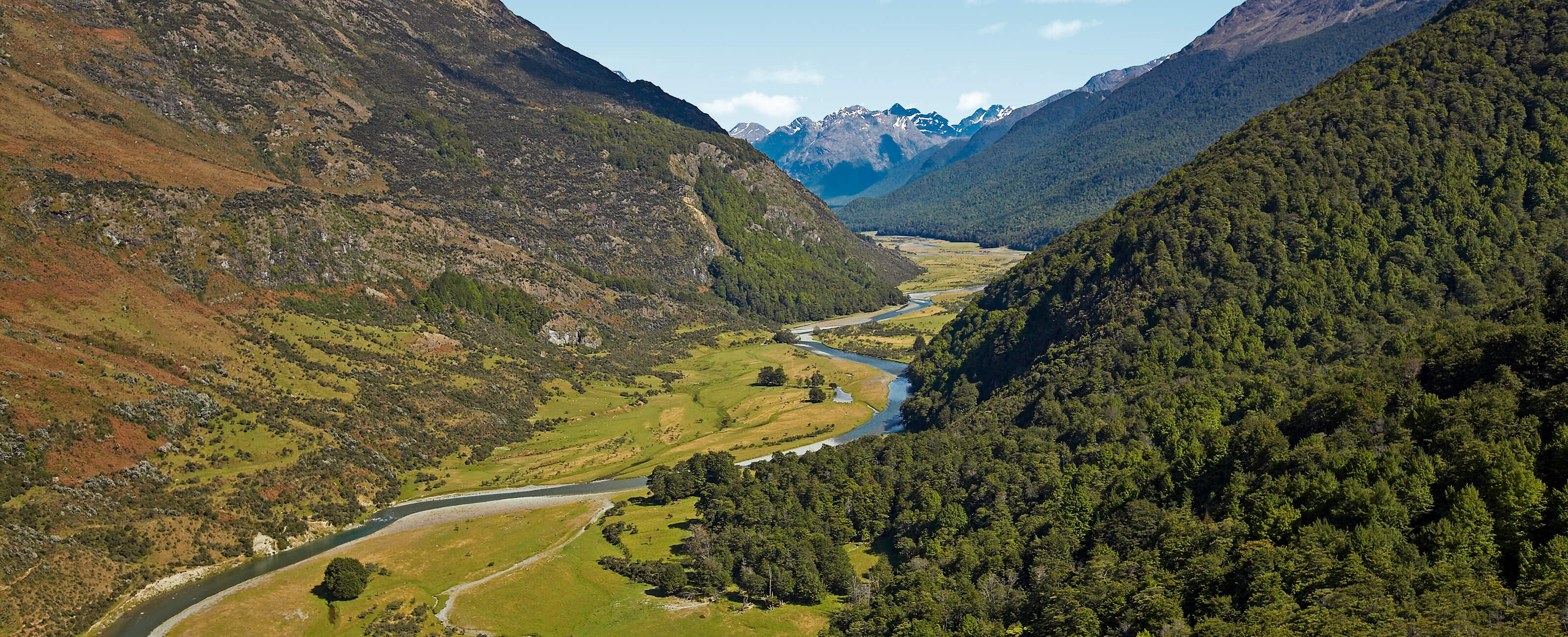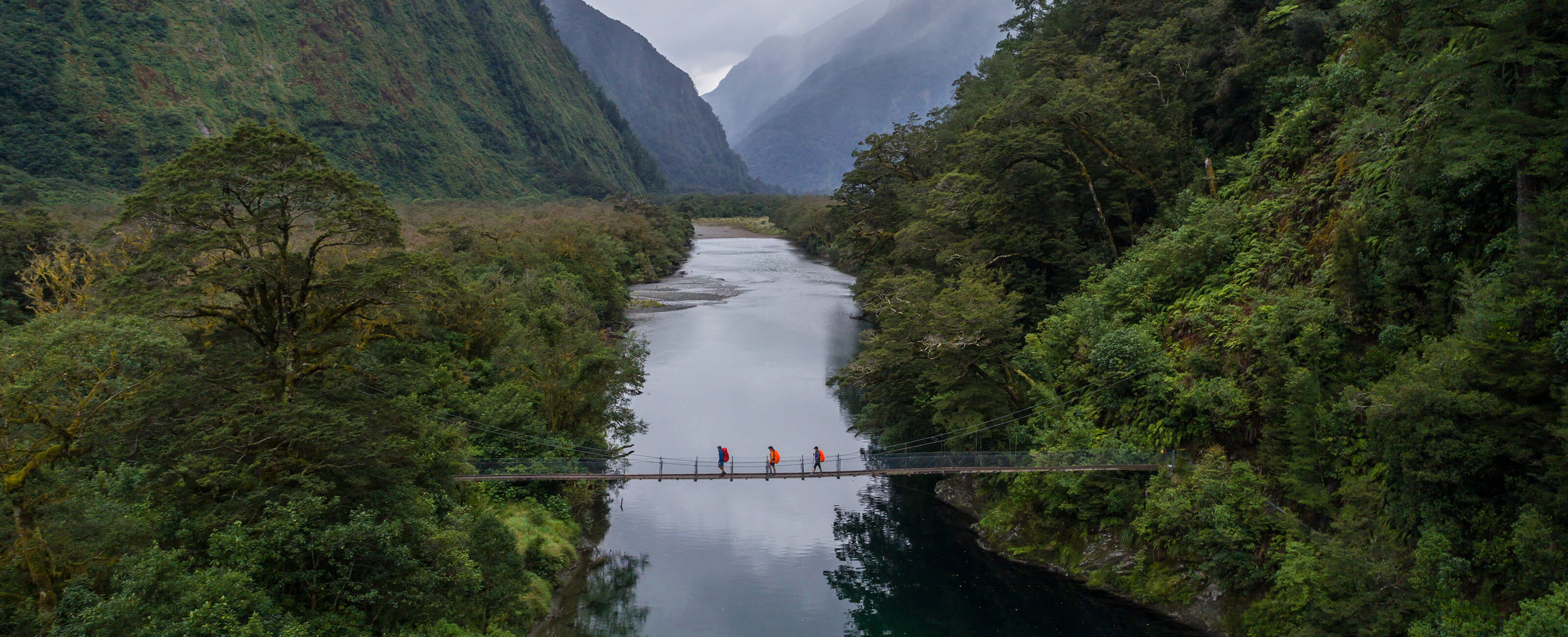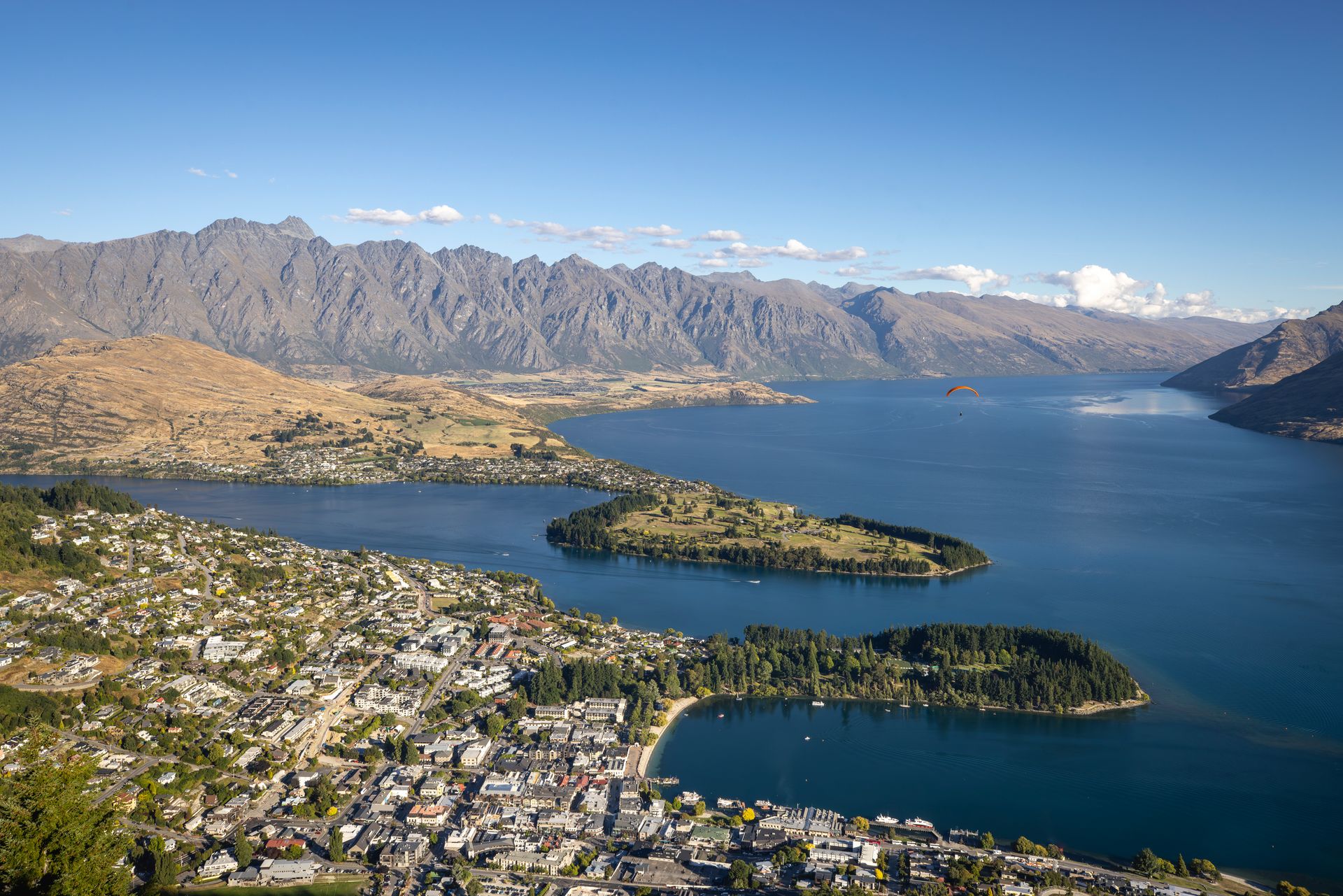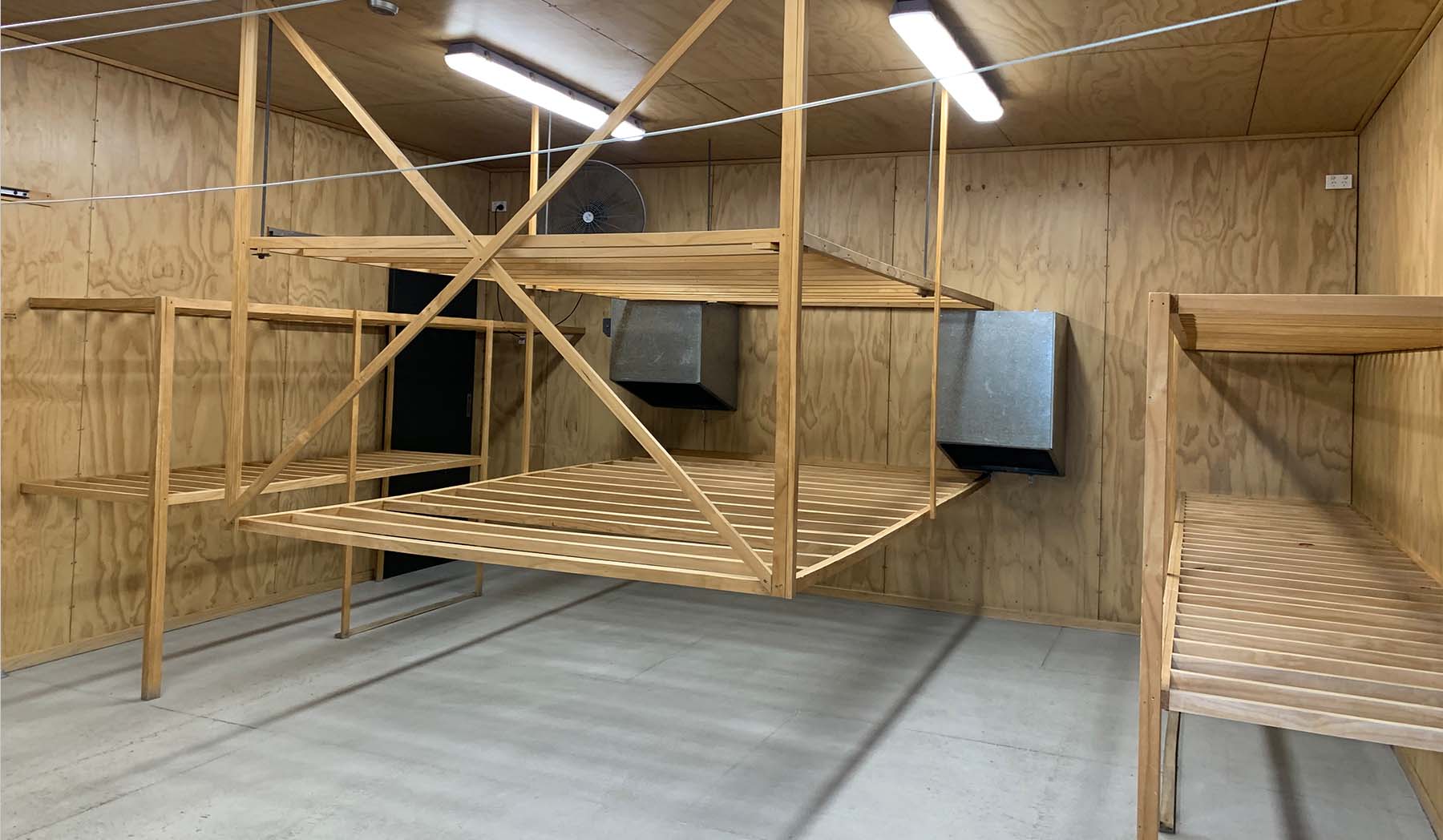Ultimate Hikes is a registered Adventure Activity.
We are committed to providing a safe environment for our guests walking the Milford, Routeburn and Greenstone Tracks.
Please read the information below.
When booking this activity, if an email address is not provided for each person, the main contact is responsible for ensuring that all members of their group understands the risks and have made an informed decision to walk with us.
The natural environment in these remote regions can be hazardous and unpredictable and under the New Zealand Adventure Activity Regulations, we are obliged to provide prospective guests with detailed advice of the potential risks you could face undertaking our activities.
Ultimate Hikes has long been a member of active adventure programmes and we regularly seek out audits to review our health and safety practises.
The following are hazards that may be encountered on our walks and the ways that Ultimate Hikes mitigate the risks where we can anticipate or predict such events.
Natural Hazards that may occur at any time include:
- Severe Storm
- Flooding
- Landslip
- Treefall
- Avalanche
- Earthquake
- Tsunami (Milford Sound)
The Alpine Fault runs the length of the Southern Alps of New Zealand and is capable of producing Magnitude 8 earthquakes. Research indicates that the next magnitude 8 earthquake is likely to cause landslides resulting in tsunami, damage to critical infrastructure and poses a significant risk to people in and around Milford Sound. Alpine fault ruptures occur on average every 300 years. For more information visit Alpine Fault website.
The region we operate in is extremely remote and rugged. The landscape is mountainous and densely covered in forest with rivers and waterfalls, some permanent and others rain created.
Snow, heavy rain, and high winds can occur at any time. Weather patterns can be unpredictable and change swiftly.
Walking on uneven terrain in an alpine environment carries the potential for high winds, wet cold conditions which could result in exposure, falls from height, injury and death.
Ultimate Hikes have detailed processes and policies developed over 30 years to prepare for severe weather events. These include:
- Respected and detailed weather software to monitor weather patterns specifically within the region we operate.
- Experienced staff in Queenstown base office constantly monitor weather and hazards
- Staff at base and on track are in regular contact with relevant departments and rangers on the Department of Conservation track network. And work closely with them on track related matters, including track safety and maintenance.
- Trained guides and managers on site in the lodges who can provide on the ground advice about conditions.
- Guides and lodge staff are in constant touch with the Queenstown base by radios. Repeaters are maintained by Ultimate Hikes and checked regularly.
- Guides and lodge managers are trained in appropriate levels of First Aid.
- Safety equipment, first aid kits, extra clothing etc are carried by guides and stored at huts along the track.
- The guide/walker ratio allows for the group to be managed safely in weather events.
- Guides are encouraged to take up the opportunity to work towards a qualification from the New Zealand Outdoor Instructor Association (NZOIA). Guide managers are trained in assessment for the course.
- Ultimate Hikes provides a detailed clothing and equipment list that walkers are required to wear and to carry with them.
While we may not be able to predict or prevent natural hazards from eventuating, Ultimate Hikes operates 8 lodges along the Milford, Routeburn and Greenstone tracks which are of strong construction and have full amenities that can shelter groups for extended periods if required.
Ultimate Hikes operates a H125 Airbus Squirrel Helicopter in line with Civil Aviation Authority requirements and is able to carry out activities on the track that provides a safe option to transport walkers where required.
Personal risk and responsibility
The tracks mostly follow the contours of the landscape and in places are rocky, with exposed tree roots. Some areas are very steep both up and down, and there are some steep drop offs. In wet weather the tracks can become slippery and muddy. Heavy rain can result in surface flooding that could reach knee height or above.
Within normal track conditions where the danger of flooding is minimal, walkers may be spread out and not always in sight of a guide. At these times, they must be acutely aware of the track conditions and take responsibility for their personal safety to minimise any risks as shown above.
You are required to adhere to any instructions given to you by a guide at all times including the wearing of appropriate clothing for the conditions. Failure to comply with any instruction could result in you being unable to continue and/or being removed from the activity. You are also responsible for all children in your care doing the same.
Our guides are experienced in assessing individual ability and if deemed unsafe for a walker to continue, due to them being either a risk to themselves or the wider group management, the guides may make the decision for said walker to be removed from the activity at the walker's cost. You are required to comply with these decisions. Such decisions will be at the sole discretion of the Guide / Ultimate Hikes Operations Team.
You are expected to read the information provided, along with our terms and conditions, and rate your physical ability accordingly. Each walker is personally responsible for ensuring they are capable of completing the walk. If it is required for you to be removed from the activity due to ability, illness, injury or any other reason, with there being no immediate form of road access, a helicopter is required. You will likely be liable for this cost. During the summer of 2024-25 141 individuals required removal from the tracks by helicopter with an average cost of NZD$1500 per person. Please be aware that for emergency medical evacuations (non-injury), charges could be up to or exceeding NZD$16,000. Whether visiting us domestically or internationally, we highly recommend travel insurance

